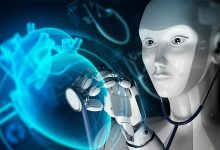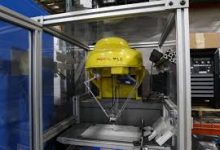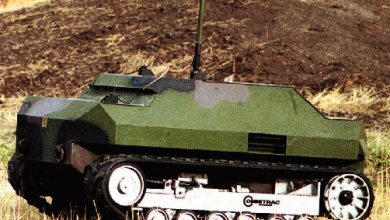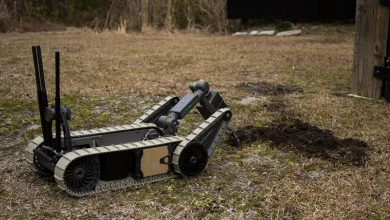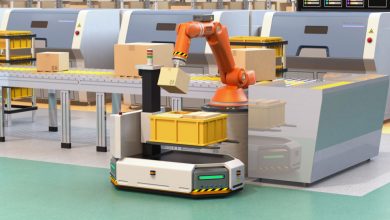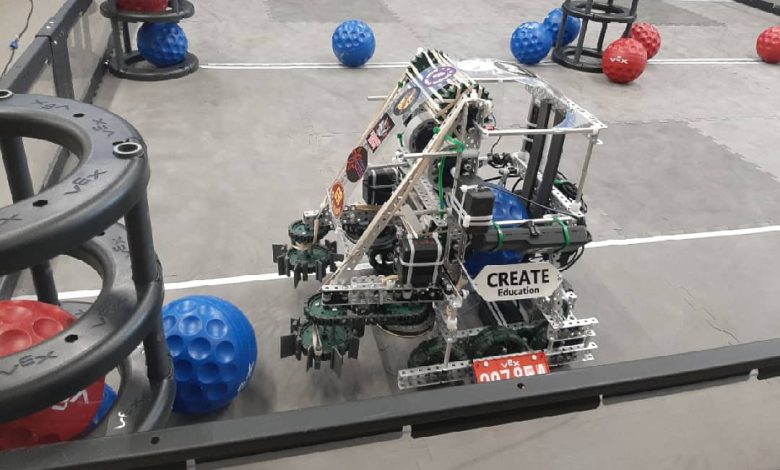
Introduction:
As hybrid robotics continues to evolve and mature, it opens up a world of possibilities that were once confined to the realm of science fiction. From revolutionizing healthcare to transforming industry and exploration, the future prospects of hybrid robotics are as promising as they are diverse. In this comprehensive exploration, we delve into the potential trajectories and emerging trends that will shape the future of hybrid robotics, showcasing its transformative impact on society, industry, and beyond.
Advancements in Healthcare:
One of the most exciting prospects for hybrid robotics lies in the realm of healthcare, where it promises to revolutionize diagnosis, treatment, and patient care. Biohybrid robots equipped with advanced sensors and actuators could enable personalized medicine by delivering targeted therapies and interventions tailored to individual patients’ needs. Additionally, biohybrid systems may play a crucial role in regenerative medicine and tissue engineering, offering new solutions for repairing and replacing damaged tissues and organs. As technologies continue to advance, we can expect to see increasingly sophisticated biohybrid devices that enhance the quality of life for patients and healthcare providers alike.
Pioneering Advancements in Healthcare: A Look into the Future
The healthcare landscape is experiencing a profound transformation driven by groundbreaking advancements in technology, particularly in the realm of hybrid robotics. With the convergence of biology and engineering, hybrid robotics is poised to revolutionize diagnosis, treatment, and patient care in ways previously unimaginable. In this in-depth exploration, we delve into the pioneering advancements in healthcare enabled by hybrid robotics, shedding light on the transformative impact they will have on medical practices, patient outcomes, and the future of healthcare delivery.
Precision Medicine and Personalized Therapies:
One of the most promising applications of hybrid robotics in healthcare is in the realm of precision medicine and personalized therapies. By leveraging advanced sensors, actuators, and biological components, hybrid robots can deliver targeted therapies and interventions tailored to individual patients’ genetic makeup, physiological characteristics, and medical history. For example, biohybrid robots equipped with microfluidic systems could administer precise doses of medication directly to diseased tissues or tumors, minimizing side effects and optimizing treatment efficacy. Furthermore, biohybrid systems may enable the development of patient-specific implants and prosthetics, customized to fit each individual’s unique anatomy and functional requirements.
Minimally Invasive Surgery and Intervention:
Hybrid robotics is poised to revolutionize surgical procedures by enabling minimally invasive techniques that offer greater precision, safety, and recovery times for patients. Biohybrid robots equipped with advanced imaging and navigation technologies can assist surgeons in performing complex procedures with unparalleled accuracy and control. For example, biohybrid endoscopic robots could navigate through the body’s natural passages to access and treat internal organs or tissues, reducing the need for invasive incisions and minimizing trauma to surrounding tissues. Additionally, biohybrid systems may enable remote surgery, allowing expert surgeons to perform procedures on patients located in remote or underserved areas with the assistance of robotic platforms.
Regenerative Medicine and Tissue Engineering:
Hybrid robotics holds tremendous potential for advancing regenerative medicine and tissue engineering, offering new solutions for repairing and replacing damaged tissues and organs. By integrating living cells with synthetic materials, hybrid robots can create biohybrid constructs that mimic the structure and function of native tissues, promoting regeneration and healing. For example, biohybrid scaffolds seeded with patient-derived stem cells could be used to regenerate bone, cartilage, or muscle tissues, offering new treatment options for patients with musculoskeletal injuries or degenerative diseases. Furthermore, biohybrid systems may enable the development of bioartificial organs and tissues for transplantation, addressing the critical shortage of donor organs and improving outcomes for patients awaiting life-saving procedures.
Remote Patient Monitoring and Telemedicine:
Hybrid robotics has the potential to enhance remote patient monitoring and telemedicine, enabling healthcare providers to deliver high-quality care to patients in the comfort of their own homes. Biohybrid robots equipped with sensors, cameras, and communication technologies can collect real-time data on patients’ vital signs, symptoms, and activities, allowing clinicians to monitor their health status and intervene as needed. For example, biohybrid systems could assist elderly or chronically ill patients with activities of daily living, provide medication reminders, or alert caregivers to signs of deterioration or emergency. Additionally, biohybrid telepresence robots could enable virtual consultations and examinations, connecting patients with healthcare providers regardless of geographical distance or physical limitations.
Rehabilitation and Assistive Technologies:
Hybrid robotics is poised to transform rehabilitation and assistive technologies, offering new solutions for restoring mobility, independence, and quality of life for individuals with disabilities or injuries. Biohybrid prosthetics, exoskeletons, and wearable devices can enhance mobility, improve dexterity, and assist with activities of daily living, enabling individuals to regain function and autonomy. For example, biohybrid exoskeletons could provide support and assistance to patients recovering from stroke or spinal cord injury, helping them relearn to walk and regain independence. Additionally, biohybrid prosthetic limbs could restore naturalistic movement and sensation, enhancing the user’s overall quality of life and integration into society.
In Conclusion,
the advancements in healthcare enabled by hybrid robotics are poised to revolutionize medical practices, patient outcomes, and the future of healthcare delivery. By leveraging the convergence of biology and engineering, hybrid robots offer new solutions for precision medicine, minimally invasive surgery, regenerative medicine, remote patient monitoring, and rehabilitation. As researchers and innovators continue to push the boundaries of what is possible, we can expect to see increasingly sophisticated hybrid robotic systems that improve the quality, accessibility, and efficiency of healthcare for people around the world.
Sustainable Agriculture and Environmental Monitoring:
Hybrid robotics holds tremendous potential for addressing global challenges in agriculture and environmental sustainability. By integrating sensors, actuators, and biological components, hybrid robots can optimize resource usage, reduce waste, and minimize environmental impact in agricultural settings. These systems can also be deployed for environmental monitoring and conservation efforts, providing valuable data on biodiversity, ecosystem health, and climate change. As the demand for sustainable food production and environmental stewardship grows, hybrid robotics will play an increasingly vital role in ensuring the health and resilience of our planet.
Sustainable Agriculture and Environmental Monitoring: Harnessing the Power of Hybrid Robotics for a Greener Future
As the global population continues to grow, the need for sustainable agricultural practices and effective environmental monitoring becomes increasingly urgent. Hybrid robotics, with its ability to integrate biological and mechanical components, offers innovative solutions to address these pressing challenges. In this comprehensive exploration, we delve into the transformative potential of hybrid robotics in promoting sustainable agriculture and environmental monitoring, highlighting its applications, benefits, and future prospects.
Precision Agriculture:
Hybrid robotics is revolutionizing agriculture by enabling precision farming practices that optimize resource usage, reduce environmental impact, and enhance crop yields. By integrating sensors, actuators, and biological components, hybrid robots can monitor soil conditions, crop health, and environmental factors in real-time, allowing farmers to make data-driven decisions about irrigation, fertilization, and pest management. For example, biohybrid robots equipped with imaging technologies and machine learning algorithms can detect early signs of plant stress or disease, enabling targeted interventions and minimizing the need for chemical inputs. Additionally, biohybrid systems may enable the development of autonomous weed control and harvesting technologies, reducing labor costs and improving efficiency in agricultural operations.
Soil Health and Conservation:
Hybrid robotics plays a crucial role in monitoring and improving soil health, a cornerstone of sustainable agriculture. Biohybrid sensors and probes can assess soil moisture, nutrient levels, and microbial activity, providing valuable insights into soil fertility and productivity. By integrating biological indicators with mechanical actuators, hybrid robots can facilitate soil conservation practices such as cover cropping, conservation tillage, and erosion control. For example, biohybrid robots equipped with seed dispensers could plant cover crops to protect soil from erosion, enhance organic matter content, and suppress weeds, promoting long-term sustainability and resilience in agricultural ecosystems.
Environmental Monitoring and Conservation:
Hybrid robotics is transforming environmental monitoring and conservation efforts by providing new tools and technologies for assessing ecosystem health, detecting pollution, and preserving biodiversity. Biohybrid robots equipped with sensors, cameras, and communication technologies can collect data on air and water quality, habitat integrity, and wildlife populations, enabling scientists and policymakers to identify environmental threats and prioritize conservation efforts. For example, biohybrid drones equipped with multispectral cameras can survey large areas of land or water, mapping vegetation cover, identifying invasive species, and monitoring changes in habitat structure over time. Additionally, biohybrid underwater robots can explore marine ecosystems, assess coral reef health, and track the movement of marine species, providing valuable insights into the impacts of climate change and human activities on ocean ecosystems.
Climate Change Mitigation and Adaptation:
Hybrid robotics plays a critical role in addressing climate change by enabling mitigation and adaptation strategies that reduce greenhouse gas emissions and enhance ecosystem resilience. Biohybrid robots equipped with sensors and actuators can monitor carbon sequestration, greenhouse gas emissions, and climate-related parameters such as temperature, humidity, and precipitation. By collecting data on ecosystem dynamics and carbon fluxes, hybrid robots can inform land management practices such as reforestation, afforestation, and agroforestry, which enhance carbon storage and promote climate resilience. Additionally, biohybrid systems may enable the development of renewable energy technologies such as biofuel production from algae or biomass, providing sustainable alternatives to fossil fuels and reducing reliance on non-renewable resources.
Disaster Response and Resilience:
Hybrid robotics is instrumental in disaster response and resilience efforts, providing rapid and effective solutions for assessing damage, providing assistance, and restoring ecosystems in the aftermath of natural disasters. Biohybrid robots equipped with sensors, cameras, and communication technologies can survey disaster-affected areas, identify hazards, and assess infrastructure damage, enabling emergency responders to prioritize resources and coordinate rescue efforts. For example, biohybrid drones can fly over disaster zones, mapping terrain, and providing real-time situational awareness to rescue teams on the ground. Additionally, biohybrid robots can assist in environmental cleanup efforts, removing debris, and restoring habitat functionality to promote ecosystem recovery and resilience in the face of adversity.
In conclusion,
Hybrid robotics holds immense potential for promoting sustainable agriculture and environmental monitoring, offering innovative solutions to address the challenges of feeding a growing population while protecting the planet’s natural resources. By integrating biological and mechanical components, hybrid robots enable precision farming practices, soil health conservation, environmental monitoring, climate change mitigation, and disaster response efforts that enhance resilience and promote long-term sustainability in agricultural and environmental systems. As researchers and innovators continue to push the boundaries of what is possible, we can expect to see increasingly sophisticated hybrid robotic systems that empower farmers, scientists, and policymakers to build a greener and more resilient future for generations to come.
Exploration and Space Exploration:
In the realm of exploration, hybrid robotics offers unprecedented opportunities for venturing into uncharted territories, both on Earth and beyond. Biohybrid robots inspired by nature’s design principles can navigate extreme environments, traverse rugged terrain, and adapt to unpredictable conditions, making them ideal for exploration missions in remote or hazardous locations. Furthermore, hybrid robots equipped with advanced sensing and imaging technologies could revolutionize space exploration by assisting in planetary exploration, asteroid mining, and habitat construction. As humanity ventures further into space, hybrid robotics will be essential for unlocking the mysteries of the cosmos and expanding our understanding of the universe.
Exploration and Space Exploration: Unveiling the Cosmos with Hybrid Robotics
The quest for exploration has been a driving force throughout human history, leading to remarkable discoveries and technological advancements. Today, as humanity looks to the stars and beyond, hybrid robotics stands at the forefront of space exploration, offering unprecedented opportunities to explore distant worlds, unlock cosmic mysteries, and expand our understanding of the universe. In this comprehensive exploration, we delve into the transformative role of hybrid robotics in exploration and space exploration, showcasing its applications, challenges, and future prospects in unraveling the mysteries of the cosmos.
Probing the Depths of Space:
Hybrid robotics is revolutionizing space exploration by providing innovative tools and technologies for probing the depths of space and unlocking the secrets of the universe. From unmanned missions to distant planets and moons to robotic rovers exploring the surface of alien worlds, hybrid robots enable scientists and engineers to conduct groundbreaking research and collect valuable data that shed light on the origins and evolution of our solar system and beyond. For example, biohybrid probes equipped with sensors and cameras can explore the atmospheres and surfaces of planets, moons, and asteroids, providing insights into their geology, chemistry, and potential for habitability.
Enabling Autonomous Exploration:
Hybrid robotics plays a crucial role in enabling autonomous exploration missions that venture into remote and hazardous environments beyond the reach of human astronauts. By integrating biological and mechanical components, hybrid robots can adapt to diverse and unpredictable conditions, navigate rugged terrain, and perform complex tasks with precision and efficiency. For example, biohybrid rovers inspired by the locomotion of animals such as snakes or insects can traverse rocky surfaces, squeeze through narrow passages, and collect samples for analysis, enabling scientific exploration in challenging environments such as caves, cliffs, or polar regions.
Expanding Human Presence in Space:
Hybrid robotics is instrumental in expanding human presence in space by providing support systems and technologies that enhance astronaut safety, productivity, and autonomy. By integrating biological sensors and actuators with mechanical platforms, hybrid robots can assist astronauts with tasks such as maintenance, repairs, and scientific research aboard space stations and habitats. For example, biohybrid robots equipped with artificial intelligence and haptic feedback systems can assist astronauts with intricate tasks such as equipment assembly, experiment setup, or medical procedures, reducing workload and improving efficiency in space missions.
Harvesting Resources from Space:
Hybrid robotics holds promise for harvesting resources from space, enabling sustainable exploration and colonization of celestial bodies such as the Moon, Mars, and asteroids. By integrating biological and mechanical components, hybrid robots can extract and process valuable resources such as water, minerals, and metals, which can be used to support human habitats, fuel spacecraft, and sustain life in space. For example, biohybrid systems may enable the development of regolith mining robots that extract water ice from lunar or Martian soil, providing a critical resource for life support systems, propellant production, and radiation shielding in space habitats.
Pioneering Interstellar Exploration:
Hybrid robotics is at the forefront of pioneering interstellar exploration missions that seek to explore distant stars, exoplanets, and extraterrestrial civilizations beyond our solar system. By integrating biological and mechanical components, hybrid robots can travel vast distances through space, collecting data and transmitting signals back to Earth in search of signs of life, habitable environments, or extraterrestrial intelligence. For example, biohybrid probes equipped with advanced sensors and communication technologies could be deployed to nearby star systems to search for exoplanets, analyze their atmospheres, and detect signatures of biological activity, providing clues to the prevalence and diversity of life in the universe.
In Conclusion,
Hybrid robotics is transforming exploration and space exploration, offering innovative solutions to explore the cosmos, expand human presence in space, and unlock the mysteries of the universe. By integrating biological and mechanical components, hybrid robots enable autonomous exploration, support human missions, harvest resources from space, and pioneer interstellar exploration missions that push the boundaries of human knowledge and imagination. As researchers and engineers continue to push the boundaries of what is possible, we can expect to see increasingly sophisticated hybrid robotic systems that revolutionize space exploration and pave the way for humanity’s future among the stars.
Industry 4.0 and Smart Manufacturing:
In the realm of industry and manufacturing, hybrid robotics is poised to drive the next wave of innovation and productivity growth. By combining the precision and reliability of mechanical systems with the flexibility and adaptability of biological components, hybrid robots can revolutionize manufacturing processes, enabling faster production cycles, higher product quality, and greater efficiency. Furthermore, biohybrid systems could play a key role in the transition to Industry 4.0, where interconnected machines and smart technologies enable autonomous and decentralized manufacturing operations. As the manufacturing landscape evolves, hybrid robotics will be at the forefront of shaping the factories of the future.
Industry 4.0 and Smart Manufacturing: Transforming the Future of Industry with Hybrid Robotics
In the era of Industry 4.0, characterized by the convergence of digital technologies, automation, and data-driven processes, hybrid robotics emerges as a transformative force in smart manufacturing. With its unique blend of biological and mechanical components, hybrid robotics revolutionizes traditional manufacturing practices, offering innovative solutions to enhance productivity, efficiency, and agility in industrial operations. In this comprehensive exploration, we delve into the transformative potential of hybrid robotics in Industry 4.0 and smart manufacturing, highlighting its applications, benefits, and future prospects in reshaping the future of industry.
Automation and Robotics Integration:
Hybrid robotics plays a pivotal role in automating manufacturing processes and integrating robotics into industrial workflows, enabling seamless collaboration between humans and machines. By combining the precision and reliability of mechanical systems with the adaptability and dexterity of biological components, hybrid robots enhance manufacturing capabilities and productivity in areas such as assembly, packaging, and quality control. For example, biohybrid robots equipped with vision systems and machine learning algorithms can perform intricate tasks such as parts inspection, sorting, and packaging with unparalleled accuracy and efficiency, reducing cycle times and minimizing errors in production.
Flexible and Agile Manufacturing:
Hybrid robotics enables flexible and agile manufacturing systems that can quickly adapt to changing market demands and production requirements. By integrating biological sensors and actuators with mechanical platforms, hybrid robots can respond dynamically to variations in product specifications, production schedules, and supply chain disruptions, enabling manufacturers to maintain competitiveness and meet customer expectations. For example, biohybrid robots equipped with adaptive control algorithms and modular end-effectors can reconfigure themselves on-the-fly to perform different tasks or handle diverse product variants, enhancing flexibility and scalability in manufacturing operations.
Human-Robot Collaboration:
Hybrid robotics fosters human-robot collaboration in smart manufacturing environments, enabling workers to collaborate with robotic systems to accomplish tasks more efficiently and safely. By integrating biological sensors and actuators with mechanical platforms, hybrid robots enhance human-machine interaction and cooperation, facilitating intuitive communication and coordination between operators and machines. For example, biohybrid robots equipped with haptic feedback systems and natural language processing algorithms can assist workers with manual tasks such as lifting, handling, or assembly, reducing physical strain and fatigue while enhancing productivity and ergonomics in the workplace.
Predictive Maintenance and Quality Control:
Hybrid robotics enables predictive maintenance and quality control strategies that leverage real-time data and analytics to optimize equipment performance and product quality in smart manufacturing environments. By integrating biological sensors and actuators with mechanical platforms, hybrid robots can monitor equipment health, detect anomalies, and identify potential issues before they escalate into costly downtime or defects. For example, biohybrid robots equipped with vibration sensors and predictive analytics algorithms can diagnose machine faults, schedule maintenance activities, and recommend corrective actions to prevent breakdowns and ensure continuous operation of manufacturing equipment.
Sustainable and Eco-Friendly Manufacturing:
Hybrid robotics promotes sustainable and eco-friendly manufacturing practices by optimizing resource usage, reducing waste, and minimizing environmental impact in industrial operations. By integrating biological and mechanical components, hybrid robots enable energy-efficient production processes, recyclable materials, and closed-loop systems that minimize resource consumption and pollution. For example, biohybrid robots equipped with adaptive control algorithms and energy-efficient actuators can optimize energy usage, reduce emissions, and lower operating costs in manufacturing facilities, contributing to a greener and more sustainable future for the industry.
In conclusion,
Hybrid robotics is revolutionizing Industry 4.0 and smart manufacturing, offering innovative solutions to enhance productivity, efficiency, and sustainability in industrial operations. By integrating biological and mechanical components, hybrid robots enable automation, flexibility, human-robot collaboration, predictive maintenance, and sustainable practices that drive innovation and competitiveness in the manufacturing sector. As researchers and engineers continue to push the boundaries of what is possible, we can expect to see increasingly sophisticated hybrid robotic systems that transform the future of industry and pave the way for a new era of manufacturing excellence.
Assistive Technologies and Human Augmentation:
Hybrid robotics also holds promise for enhancing human capabilities and quality of life through assistive technologies and human augmentation. Biohybrid prosthetics, exoskeletons, and wearable devices can restore mobility, improve dexterity, and enhance sensory perception for individuals with disabilities or injuries. Furthermore, biohybrid systems could enable new forms of human-machine interaction, allowing for seamless integration of technology into everyday life. As society ages and the demand for assistive technologies grows, hybrid robotics will play an increasingly vital role in enabling independence, autonomy, and well-being for people of all ages and abilities.
In conclusion,
The future prospects of hybrid robotics are limitless, with far-reaching implications for healthcare, agriculture, exploration, industry, and society as a whole. As researchers and innovators continue to push the boundaries of what is possible, we can expect to see increasingly sophisticated hybrid robots that blur the lines between biology and technology, reshaping the way we live, work, and explore the world around us. By harnessing the power of nature’s design principles and combining it with human ingenuity, hybrid robotics will unlock new frontiers of innovation and discovery, driving progress and prosperity for generations to come.
